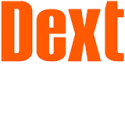Interested in Opening a Trump Account?
Trump AccountsOne Big Beautiful Bill Act - Employees & Employers
By: Brent Hagen
Significant new tax legislation (the Act) was signed into law on July 4, 2025 (informally known as One Big Beautiful Bill or OBBB). The Act is comprehensive and includes key changes to a number of tax provisions potentially affecting your situation. Understanding these changes is essential for effective tax planning and optimizing your situation.
Please review this list, which highlights some of the major provisions impacting employers and employees.
• Employee Retention Tax Credit (ERTC): Although an eligible employer was potentially entitled to claim a COVID-related ERTC until April 15, 2025, the Act prohibits IRS from issuing any ERTC refunds after July 4, 2025 (unless the taxpayer had filed the refund or credit claim before Jan. 31, 2024). The Act also adds a new $1,000 penalty on a "COVID-ERTC promoter" who aids or advises on COVID-ERTC documents without meeting due diligence requirements when determining eligibility for, or the amount of, a credit or advance payment. The penalty is $1,000 per violation.
• Tips: The Act adds a new deduction of up to $25,000 for "qualified tips," subject to phaseout for a taxpayer with MAGI exceeding $150,000 ($300,000 for joint filers). However, tips from certain specified service trades or businesses don't qualify; no deduction is allowed unless the taxpayer includes a SSN on the applicable return; and other rules apply. Also, IRS is required to publish a list of occupations that customarily receive tips (including occupations that customarily and regularly received tips before 2025). IRS is also required to adjust withholding procedures to reflect the new deduction starting in 2026 (reporting entities may use reasonable methods to approximate designated tip amounts during the transition period). The deduction is set to expire after 2028.
• Overtime: The Act also adds a new deduction of up to $12,500 ($25,000 for joint filers) for "qualified overtime compensation," subject to phaseout for a taxpayer with MAGI exceeding $150,000 ($300,000 for joint filers). Qualified overtime compensation is defined by reference to the Fair Labor Standards Act (and doesn't include qualified tips). Similar to the new tips deduction, no overtime deduction is allowed unless the taxpayer includes a SSN on the applicable return and the deduction is set to expire after 2028. Also, IRS is required to update withholding procedures beginning in 2026 to reflect the new deduction. Note that the measurement of overtime compensation is only the premium portion over and above the base rate of pay. For instance, if an employee receives time-and-a-half for overtime, only the extra half portion of the compensation is excludable.
• Paid Family and Medical Leave Credit: The Act makes this credit permanent. Also, under the Act, employers will choose between two methods for calculating the credit: the applicable percentage of the amount of wages paid to qualifying employees for any period in which the employees are on family and medical leave, or the applicable percentage of premiums paid or incurred by an employer for an insurance policy that provides paid family and medical leave (in other words, an employer chooses to take the credit based on wages paid or premiums paid). Other changes include that, at the election of the employer, an eligible employee can be one who has been employed by the employer for not less than six months, rather than one year. The changes under this provision apply to tax years after 2025.
• Employer-Provided Child Care Credit: Effective 2026, the Act enhances the employer-provided child care credit by increasing the credit percentage for "qualified child care expenditures" from 25% to 40% for regular businesses, 50% for eligible small businesses. The maximum credit is $500,000 ($600,000 for eligible small businesses), subject to annual inflation adjustments beginning in 2027.
• Employee Exclusion for Employer Payments of Student Loans: The Act makes permanent the employee exclusion for qualifying employer payments of student loans. Also, the Act provides an inflation adjustment to the statutory maximum exclusion amount ($5,250) for tax years beginning after 2026.
• Dependent Care Assistance Programs: The Act increases the annual tax-free limit for amounts paid or incurred by an employer pursuant to a dependent care assistance program to $7,500 ($3,750 for a married individual filing separately). This provision is effective for tax years beginning after 2025.
• Moving Expenses. The Act makes the prior suspension of the moving expense deduction and exclusion permanent for most taxpayers. However, the exception for active-duty members of the Armed Forces moving due to a military order and permanent change of station remains. There is also a new exception for U.S. intelligence community employees and appointees who relocate due to a change in assignment. This is effective for tax years after 2025.
• Bicycle Commuting Expenses. The Act permanently eliminates the qualified bicycle commuting reimbursement exclusion.
• 529 plans-Postsecondary Credentialing Expenses: The Act allows 529 savings plan distributions to apply to "qualified postsecondary credentialing expenses." Recognized postsecondary credentials include occupational or professional licenses issued or recognized at the state or federal government level. They also include certificates of completion of an apprenticeship registered and certified with the Secretary of Labor and credentials as defined in Section 3(52) of the Workforce Innovation and Opportunity Act. This provision applies to distributions made after July 4, 2025.
• Information reporting, Forms 1099-NEC and 1099-MISC: For payments made after 2025, the reporting thresholds for Forms 1099-NEC and 1099-MISC are increased from $600 to $2,000 (adjusted for inflation after 2026). There is also a conforming change for backup withholding.
I hope you find this helpful. As noted above, these are just some of the changes in the Act.




